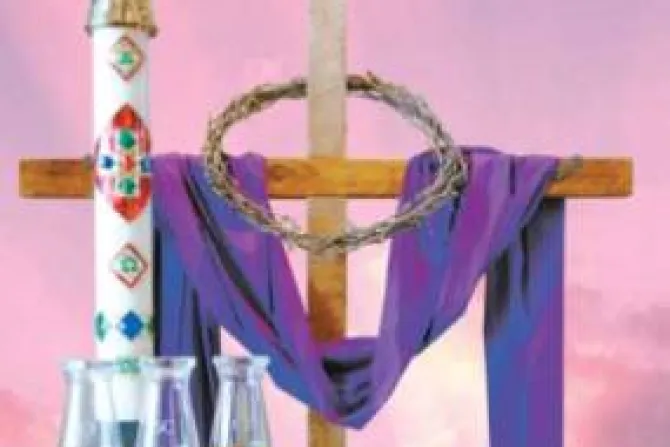Omaha, Neb., Apr 8, 2009 / 21:25 pm
As Christians prepare to celebrate Christ's resurrection at Easter, they must first remember his suffering and death, said Father Francis Nigli, pastor at St. Patrick Church in O'Neill, Nebraska. Several liturgies during Holy Week, considered the most important week in the church's liturgical year, provide the opportunity to do so, he said.
Holy Week, the last week of Lent, includes the religious holidays of Holy Thursday, Good Friday and Holy Saturday.
Father Nigli said those three days leading up to Easter are the "greatest days" in the church. Referred to as the Triduum, Holy Thursday, Good Friday and Holy Saturday are three separate days celebrated as one feast, he said.
Holy Thursday Mass recalls Christ's Last Supper and the institution of the Eucharist. It also includes the washing of the feet ceremony.
On Good Friday, there is no Mass anywhere in the world, and churches are bare. The Stations of the Cross often are prayed that day and liturgies are held to commemorate Christ's Passion.
Holy Saturday is considered a day of silence and prayer. No Mass is celebrated until that evening at the Easter Vigil, which takes place after sundown. It is at that Mass that the church welcomes new Catholics.
Father Nigli encourages families to attend all three liturgies.
"People don't see the importance of the Triduum. We have such poor numbers at church," he said. "I really encourage families, especially those with younger people at home, to go experience the whole thing like a three-part movie."
(Story continues below)
Not just a day
In the Catholic Church, Easter is the most important feast day, even more so than Christmas, because it celebrates Jesus' resurrection.
"The greatest sign of Jesus being the Son of God is that he rose from the dead," Father Nigli said. "Everybody's born, but rising from the dead - that's the part where we are certain that Jesus Christ has power over life and death."
And because of its importance, Easter is more than just a day. It's a seven-week season of the church year. The 50 days begin at sundown the evening before Easter Sunday and last until Pentecost Sunday, which is considered the birthday of the church.
Father Nigli said the Easter season is the time for new Catholics - those who came into the church at the Easter Vigil - to experience mystagogia, which is "the unraveling or unpacking of the church's mysteries and sacraments."
All other Catholics, Father Nigli said, are called to celebrate at the same time a renewal of their own faith.
"That is why we have the baptismal water sprinkling rite ... that we are renewed in our own baptismal promises and take a new vigor in our faith," he said.
The colors used during the Easter season are white or gold, which are symbolic of Jesus' transfigured body when he showed his glory, Father Nigli said.
"We also understand that at the time of the resurrection, he had a glorified body that came through and so symbolic of that, we use white or gold to reflect the glory that God attached to the human body," he said.
Divine Mercy
In 2000, at the canonization of St. Faustina Kowalska, Pope John Paul II designated the Sunday after Easter - this year April 19 - as Divine Mercy Sunday. It is dedicated to the devotion of the Divine Mercy promoted by St. Faustina, and based on the saint's entries in her diary of conversations with Jesus.
The church teaches that Jesus promised to give a special gift to those who go to confession with contrition and receive Holy Communion that day. Jesus said all of their sins and the punishment for those sins would be wiped away.
"It's like a second baptism," Father Nigli said. "The graces offered in this promise by Christ to St. Faustina give us a brand new awakening of the soul. It's like being reborn again."
In preparation for Divine Mercy Sunday, Catholics must practice showing mercy to others. They also can pray the Divine Mercy Novena.
On Divine Mercy Sunday, Catholics are encouraged to pray the Chaplet of Divine Mercy and also venerate the image of the Divine Mercy.
Printed with permission from the Catholic Voice, newspaper for the Archdiocese of Omaha.



